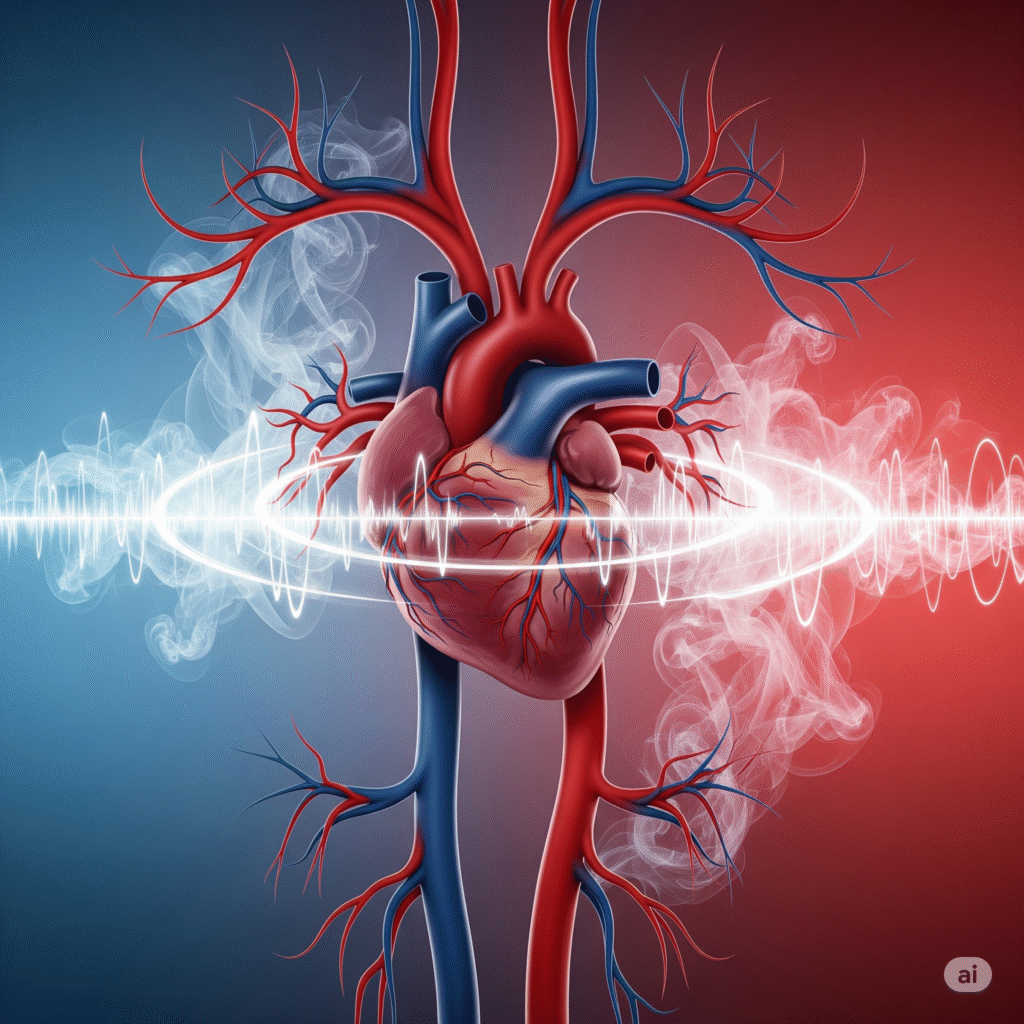Hypertension
Introduction
High blood pressure, commonly known as hypertension, is a chronic medical condition where the blood force against the arterial walls is constantly high. It is a major risk factor for heart disease, stroke, kidney failure and other health complications. Often called “silent killer”, hypertension cannot show symptoms until it causes significant damage to vital organs.

Types of hypertension
Primary hypertension
The most common type with no identifiable reason; Gradually develops over time due to genetic and lifestyle factors.
Secondary High blood pressure
Due to the underlying condition such as kidney disease, hormonal disorder, or side effects of the drug.
White coat hypertension
Blood pressure increases temporarily due to anxiety during a doctor's visit, but otherwise normal.
Masked High blood pressure
Common readings in the clinic but blood pressure in daily life or at home was elevated.
Causes of hypertension
- Family history of hypertension increases the risk of development of high blood pressure.
- Additional body weight stresses the heart and increases blood pressure levels.
- Lack of physical activity weakens the heart and contributes to high blood pressure.
- Consumption of high salt increases water retention, blood volume and pressure.
- Drinking too much alcohol causes damage to blood vessels and increases blood pressure.
- Smoking makes the blood vessel narrow and increases heart rate and pressure.
- Chronic stress increases hormone levels that elevate blood pressure
- Age naturally strengthens the arteries, increases resistance and blood pressure.
- Kidney disease reduces the ability to regulate fluid, causing high pressure.
- Sleep apnea hinders breathing, stresses the cardiovascular system and increases pressure.
- Thyroid imbalance can affect heart rate and blood pressure regulation.
- Some drugs may increase blood pressure as a side effect.
- Poor diet rich in fat, sugars and processed food promotes high blood pressure.
Clinical features of hypertension :
Headache
Often occurs behind the head, especially with morning or high readings.
Dizziness
A common symptom due to the level of ups and downs or elevated blood pressure
Blur vision
Hypertension can affect blood vessels in the eyes, causing vision problems.
Tiredness
Continuous fatigue can be from the heart to work hard to pump blood.
Palpitations
Rapid or irregular heartbeat sensation due to increasing stress on the heart.
Symptoms associated with hypertension
- Headache is often in the morning or behind the head.
- Feeling dizziness or lighthead, especially during a sudden change in position
- Blurred or dual vision due to pressure on the blood vessels of the eye.
- Chest pain, elevated blood pressure indicates stress on the heart.
- Shortness of breath during or even during minimal activity
- Heart fatigue or general weakness works more difficult than normal.
- In cases of nose, especially too much or sudden blood pressure.
- Irregular heartbeat or beating felt as fluttering in the chest.
Investigations in hypertension
- Frequent readings continuously confirm the level of high blood pressure using a sphigmomanometer or digital monitor.
Detects signs of protein or kidney damage which is often associated with long -standing hypertension.
Evaluate kidney function (creatinine, urea), cholesterol levels, blood sugar and electrolytes.
Check for heart rhythm abnormalities or heart growth due to prolonged high pressure.
Uses ultrasound to assess heart shape, function and detect thick heart walls.
Observe blood vessels in the retina for hypertension or change.
Measure over 24 hours of blood pressure to detect ups and downs to detect and confirm the diagnosis.
